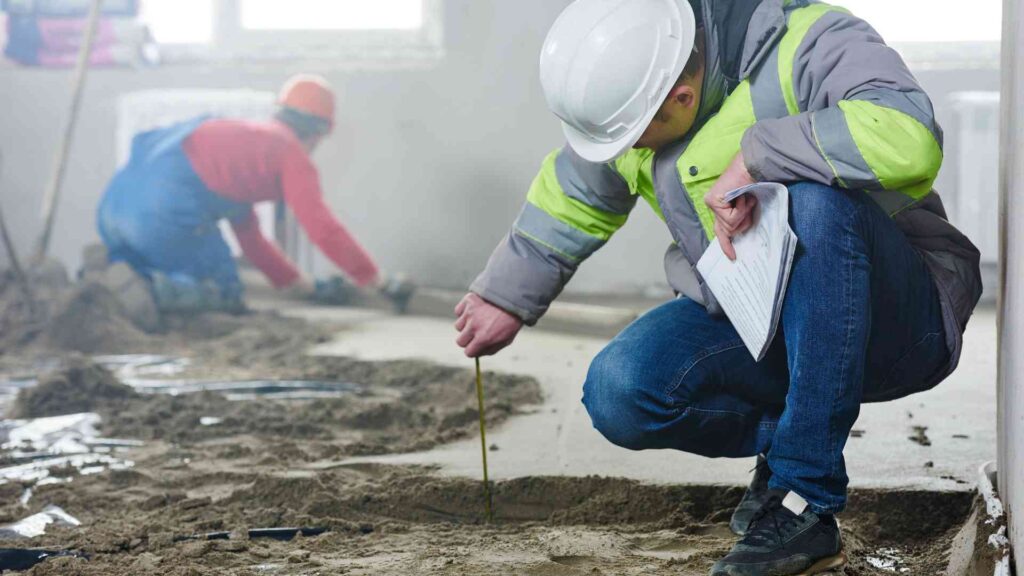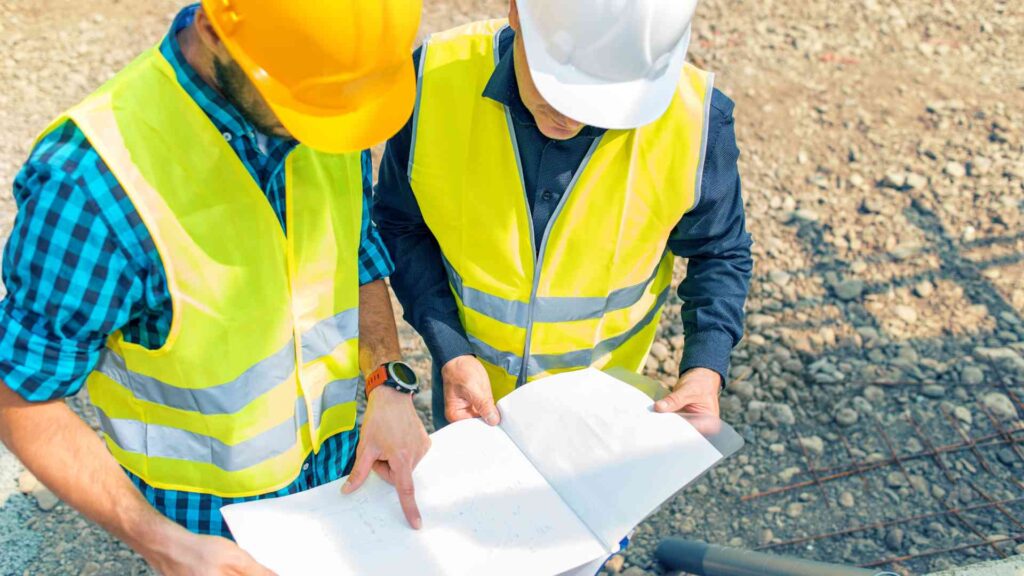Planning a concrete project in Buckeye involves careful budgeting to ensure its successful completion. Whether you’re renovating your home, constructing a commercial building, or working on public infrastructure, understanding the costs involved is crucial. In this comprehensive guide, we will break down the basics of concrete project budgeting, explain the different types of concrete projects, discuss the cost breakdown, and explore how location factors into your budget considerations.
The Basics of Concrete Project Budgeting
Before diving into the nitty-gritty of budgeting, it’s essential to define your concrete project’s scope. Are you planning a small residential project or a large-scale commercial endeavor? Understanding the specific requirements of your project will help you estimate the costs more accurately.
Several key factors influence the cost of a concrete project, such as the size of the area to be covered, the desired finish and design, and accessibility. It’s crucial to consider these factors when establishing your budget to avoid any surprises or unforeseen expenses along the way.
Defining Your Concrete Project
The first step in budgeting your concrete project is to define its scope and purpose. Are you looking to install a new driveway, patio, or pool deck? Or perhaps you’re planning a larger-scale project, such as constructing a foundation or a retaining wall. Clearly outlining your project will help you identify the necessary materials and estimate the required labor.
For example, if you’re considering a new driveway, you’ll need to determine its dimensions, whether it will be a straight or curved design, and if any additional features like decorative borders or stamped patterns are desired. All of these details will impact the overall cost of the project.
Once you have a clear understanding of your project’s scope, you can start researching the materials needed. Different concrete mixes, reinforcement options, and finishes will have varying costs. By considering these factors early on, you can make informed decisions and avoid costly changes later in the process.
Key Factors Influencing the Cost
Several factors can significantly impact the cost of your concrete project. These may include the complexity of the design, site conditions, and the availability of materials. Additionally, if your project requires specialized equipment or unique finishes, the cost may increase accordingly. Therefore, it’s essential to consider these factors when budgeting to ensure you allocate sufficient funds for all aspects of your project.
Complex designs, such as intricate patterns or custom shapes, will require more labor and may involve additional materials. Similarly, if your project site has poor soil conditions or limited access for equipment, it may require extra preparation work, which can add to the overall cost.
Furthermore, the availability of materials can affect pricing. If certain materials are in high demand or need to be sourced from a distant location, transportation costs may increase. It’s important to research local suppliers and consider any potential delays or price fluctuations that may impact your budget.
The Importance of Accurate Budgeting
Accurate budgeting is crucial for the success of your concrete project. It allows you to plan and allocate resources effectively, ensuring that you have enough funds to cover all necessary expenses. By budgeting accurately, you can avoid delays, unexpected costs, and potential compromises in the quality of work.
One aspect of accurate budgeting is accounting for potential contingencies. It’s wise to set aside a portion of your budget for unforeseen circumstances, such as weather delays, material shortages, or unexpected site conditions. This contingency fund can provide a safety net and help you navigate any challenges that may arise during the project.
Additionally, accurate budgeting enables you to make informed decisions about the materials and finishes you choose. By understanding the costs associated with different options, you can prioritize your preferences and make adjustments if necessary to stay within your budget.
Remember, budgeting is an ongoing process throughout your concrete project. Regularly review and update your budget as the project progresses to ensure you stay on track and make any necessary adjustments along the way.
Understanding Different Types of Concrete Projects
Concrete projects can vary widely based on their intended use and scale. It’s essential to understand the different types of projects to tailor your budget accordingly.
Concrete is a versatile and durable material that can be used in a wide range of applications. From residential projects to commercial and public infrastructure projects, concrete offers a reliable solution for various construction needs.
Residential Concrete Projects
Residential concrete projects include various applications such as driveways, sidewalks, patios, and pool decks. These projects not only enhance the aesthetic appeal of a home but also provide functional spaces for outdoor activities.
When planning a residential concrete project, it’s crucial to consider factors such as surface preparation, reinforcement, and finishes. Proper surface preparation ensures a solid foundation for the concrete, while reinforcement helps prevent cracking and increases structural integrity. The choice of finishes, such as stamped or stained concrete, can add a decorative touch to the project.
Additionally, the size and complexity of residential concrete projects can vary significantly, impacting the overall cost. Larger driveways or extensive patio areas may require more materials and labor, leading to higher expenses. It’s important to carefully assess the scope of the project and consult with professionals to determine an accurate budget.
Commercial Concrete Projects
Commercial concrete projects encompass a broad range of applications, from parking lots and walkways to retail spaces and industrial facilities. These projects often require more extensive planning and coordination due to their larger scale and specific requirements.
When budgeting for commercial concrete projects, it’s essential to consider factors such as site accessibility, load-bearing requirements, and any architectural specifications. For example, a parking lot in a high-traffic area may need to withstand heavy vehicles and require reinforced concrete. Retail spaces may have specific design requirements, such as polished concrete floors or decorative elements.
Furthermore, commercial projects often involve working closely with architects, engineers, and contractors to ensure compliance with building codes and regulations. The coordination of different trades and the need for precise scheduling can also impact the overall cost of the project.
Public Infrastructure Projects
Public infrastructure projects play a vital role in the development and maintenance of cities and communities. These projects include bridges, roads, and other municipal constructions that serve the public.
When budgeting for public infrastructure projects, there are several factors to consider. The scale of the project is one of the primary considerations, as larger structures or extensive road networks may require more materials, labor, and time to complete.
Additionally, public infrastructure projects often involve working closely with local authorities and adhering to specific regulations and standards. This may include obtaining permits, conducting inspections, and following safety protocols. The need for road closures or traffic management during construction can also impact the project’s budget and timeline.
Moreover, public infrastructure projects require careful planning and coordination to ensure the safety and convenience of the public. Engineers and contractors must consider factors such as traffic flow, pedestrian access, and environmental impact when designing and executing these projects.
In conclusion, understanding the different types of concrete projects is crucial for budgeting and planning purposes. Whether it’s a residential, commercial, or public infrastructure project, each type has its unique considerations and requirements. By considering factors such as surface preparation, reinforcement, architectural specifications, and compliance with regulations, you can ensure the successful completion of your concrete project.
Cost Breakdown of a Typical Concrete Project
A typical concrete project consists of several cost components. Understanding the breakdown of these costs will help you allocate your budget more effectively.
Material Costs
Material costs usually make up a significant portion of your budget. These include cement, aggregates, reinforcing materials, and any additives or special finishes. The quantity and quality of materials required will depend on the size and complexity of your project.
Labor Costs
Labor costs involve the hiring of skilled workers to undertake the concrete project. The number of laborers required will depend on the project’s size and complexity. It’s essential to account for the wages, benefits, and any additional subcontracting costs when budgeting for labor.
Equipment and Tool Costs
Concrete projects often require the use of specialized equipment and tools, such as concrete mixers, excavation machinery, and finishing tools. It’s crucial to factor in the rental or purchase costs of these items when budgeting your project.
Permit and Inspection Fees
Obtaining permits and conducting inspections are essential for ensuring your concrete project complies with local regulations. These fees can vary depending on the location and the type of project. It’s crucial to include these costs in your budget to avoid any legal or compliance issues.
How Location Affects Your Concrete Project Budget
Location plays a significant role in determining the cost of your concrete project. Several factors specific to Buckeye and its surrounding areas can impact your budget considerations.
The Impact of Local Market Conditions
Buckeye’s unique market conditions can affect the availability and cost of materials and labor. Before budgeting your project, research local suppliers, contractors, and compare their prices and quality of work. This will help you estimate the costs more accurately and ensure that you’re getting the best value for your investment.
Transportation and Delivery Costs
The distance between the source of materials and your project site can impact transportation and delivery costs. Concrete is a heavy material and requires specialized equipment to transport safely. It’s crucial to consider these costs when budgeting, as they can vary depending on the distance and accessibility of your site.
Climate and Weather Considerations
Buckeye’s climate and weather conditions can affect the timeline and cost of your concrete project. Extreme temperatures or adverse weather conditions may require additional measures, such as temporary shelters or accelerated curing techniques. When budgeting, account for any potential delays or expenses related to weather conditions.
By considering these location-specific factors, you can accurately estimate your concrete project’s budget in Buckeye and ensure its successful completion.


